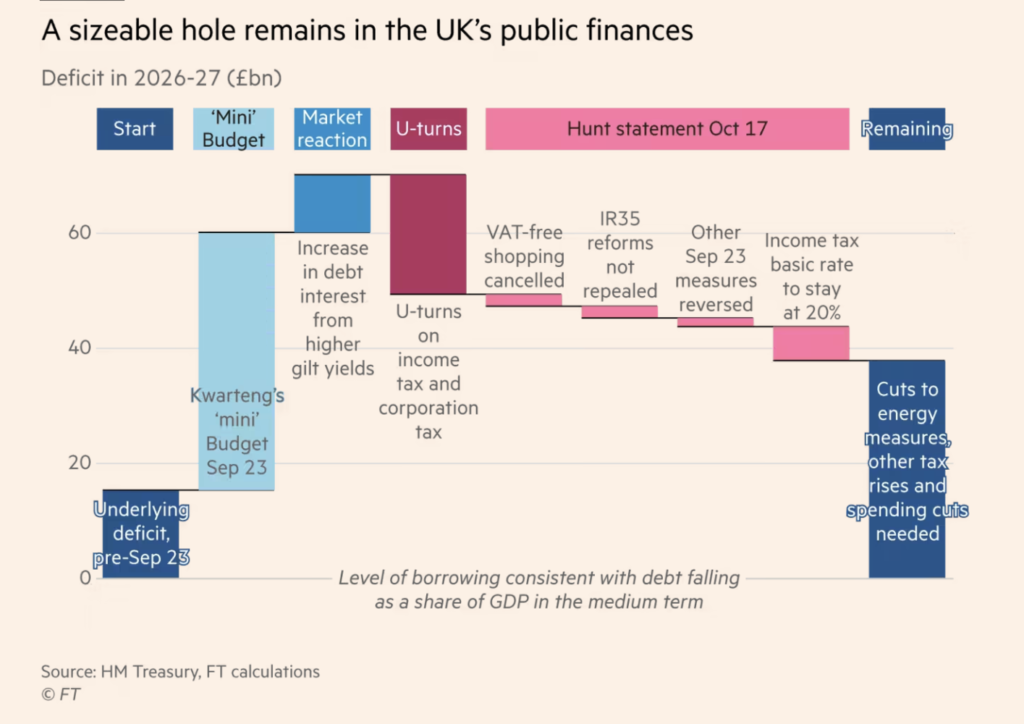Regular readers of my blog will know that I am a big fan of building agility in an organisation so it can better manage change. That’s because change is constantly present, and there’s simply no way of avoiding it. What’s more, technology has only made the pace of change faster, so if a business doesn’t have a plan to handle change, it’s bound to fail.
That said, as the image at the top of this blog shows, it’s possible to have too much change… The UK will shortly have its fifth Prime Minister in six years, while there have been four changes in Chancellor of the Exchequer this year alone – one for each season! And we are also on our third Home Secretary this year. This has caused no end of amusement in some circles, as the tweet below shows, but it’s clearly a less-than-ideal way to run a country. The newspapers at the weekend are pretty much in agreement that the resignation of Liz Truss and the turmoil her “mini-budget” created has created chaos.

I am not here to discuss economic policy, and whether you agree with the low tax, “trickle down” policy favoured by Truss and Kwarteng or not, we can all agree that the unveiling of “Trussonomics” has been damaging to the UK economy. Even with a new Chancellor undoing much of the mini-budget, the UK finds itself in a deep hole, and it’s unclear how this can be filled other than through public sector cuts and higher – not lower – taxes.

In her defence, Truss claimed to want to drive economic growth, an aim that no one would disagree with. Economic growth is required, and by definition, that involves change. You can agree or disagree with her policy, but the bigger issue is perhaps not what she did but the quantum and the speed of the changes.
The way her government went about pursuing its plans is instructive. What I am interested in discussing here is not the policy itself but the approach it adopted, for this tells us much about how to manage change.
Manage the pace of change
When faced with change, it’s possible to take an evolutionary or revolutionary approach. Evolution is often favoured because its effects are gradual, although the downside can be the time it takes to get where you want to be. Revolutionary change such as that pursued by Truss risks overturning the apple cart in pursuit of the goals. On the plus side, those changes do tend to happen fast!
Clearly, there needs to be a happy medium – somewhere between being brave and being foolhardy. One of the approaches I often recommend when talking to end users about harnessing technology to drive change is to take small but deliberate steps.
For example, there is no need to replace all the technology in an existing system to gain the benefits that data and analytics make possible – a systemic approach of making small but continual modifications to a system delivers gains without causing disruption.
Take people with you
The second lesson that we can draw from the UK’s current predicament is that communication is key. Failure to communicate can be very expensive.
Recently, the government failed to explain how it would meet its borrowing requirements, and the markets acted predictably, with the expected increase on costs of borrowing. Failure in communication, combined with the pace of change, added around £10bn to the cost of government borrowing through higher interest rates.
People deal with change differently, and it’s important that leaders guide people on the journey, speeding up those at the back and ensuring those at the front don’t get too far ahead. Most importantly, they ensure that everyone understands the direction of travel. For our industry, that means bringing customers on a clearly defined and well-paced journey, and ensuring that all stakeholders are kept involved and informed.
Fail fast – or never fail at all?
A final lesson about managing change that I would draw from recent events is the need to balance resilience and curiosity. While the ‘fail fast’ approach favoured by Silicon Valley has proven successful to social media start-ups, I’m not sure it can be translated across other business areas. In the security industry we are tasked with protecting our customers’ property, people, assets and reputations.
‘Fail fast’ may be a good adage, and you have to be able to recognise quickly if a business approach is not working. Curiosity and innovation are closely linked, and it’s essential to learn quickly, or an organisation risks never getting where it needs to be.
However, recent political events show just how easily a reputation is lost and how hard it is to regain it. Given the security industry is tasked with managing risk, failure is not an option, and a balance between resilience and curiosity must be struck.
Being the change agents our customers want
The security industry is undergoing a massive transformation, driven by the rapid development of new technology, changes in how workplaces and public spaces are used, and a shift in the nature of risk.
Asking many customers to embrace revolutionary change would, understandably, be too much for them. Failing to properly explain the journey to them, meanwhile, would be an obvious mistake.
As an industry, we can best help them down the path towards digital transformation by showing them how they can take small steps to get the big wins.
If your organisation could use help navigating change and managing risk, contact Reliance High-Tech on info@reliancehightech.co.uk.